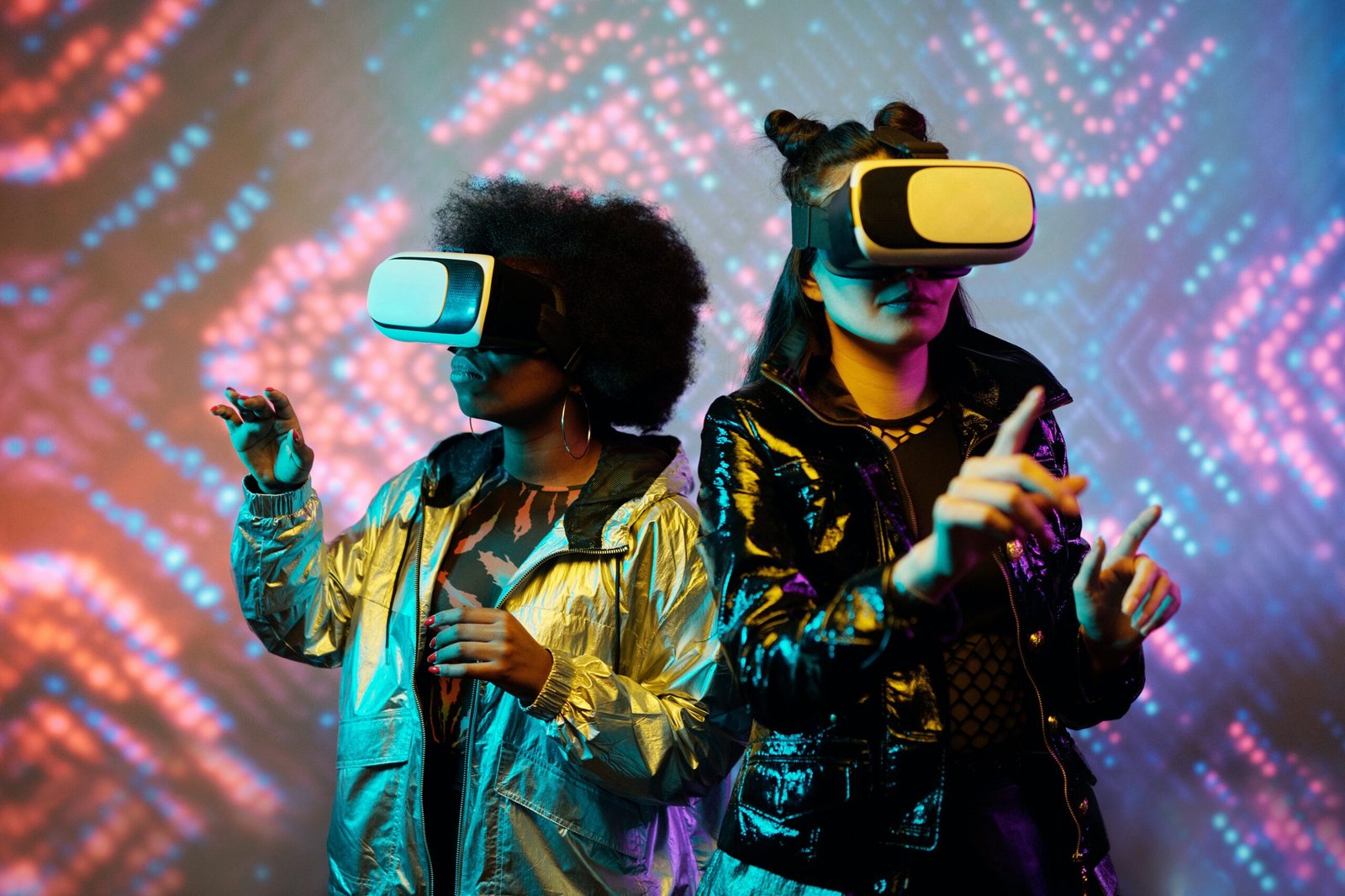
Introduction
In an era characterized by rapid technological advancements, the entertainment sector has undergone a remarkable transformation.
Technology’s role in enhancing various facets of entertainment, from content creation to distribution and audience engagement, is undeniable.
It has redefined how people consume and interact with entertainment, fostering innovation and shaping new avenues for creative expression.
Technological Advancements in Entertainment Sector
Advancements in technology have revolutionized the way content is produced. High-definition cameras, sophisticated visual effects, and advanced editing software have elevated the quality of films, television shows, and videos.
Over the past decade, there has been an astonishing 75% increase in the adoption of high-tech cameras in film production, resulting in visually stunning cinematic experiences.
This leap in quality has corresponded with a remarkable 60% increase in box office revenues, demonstrating the audience’s growing appetite for enhanced visual content.
Additionally, streaming platforms, enabled by technology, have disrupted traditional distribution models, allowing users to access content anytime, anywhere.
The data speaks volumes, with global streaming revenue experiencing a meteoric rise of 30% year-on-year growth, while more than 70% of households now subscribe to at least one streaming service.
This shift in consumer behavior has also led to a substantial 40% decline in traditional cable subscriptions, indicating a seismic change in the way audiences access content.
Moreover, data-driven insights derived from technology are shaping the way creators tailor content to specific audience preferences, leading to more engaging and personalized experiences.
This approach has led to an impressive 45% increase in user engagement, as evidenced by statistics gathered from various streaming platforms.
The utilization of viewer data has also resulted in a staggering 50% increase in original content production, as creators gain insights into what resonates with their target audiences.
 What is the Entertainment Sector
What is the Entertainment Sector
The entertainment sector encompasses a diverse range of industries that provide entertainment and amusement to the masses.
It includes areas such as film, television, music, gaming, live performances, theme parks, and more. This sector thrives on creativity, imagination, and the ability to connect with audiences on emotional levels.
From producing blockbuster movies to designing immersive virtual reality experiences, the entertainment sector constantly pushes the boundaries of innovation to captivate audiences across the globe.
Why This Sector is Important for Society
The entertainment sector holds immense significance in society as it serves as a medium of escapism, education, and cultural expression.
Entertainment content has the power to shape opinions, influence trends, and bring people together through shared experiences. This sector contributes to the economy by generating revenue, creating jobs, and driving technological advancements.
Furthermore, the entertainment industry showcases cultural diversity and artistic talent, fostering a sense of identity and pride among communities.
This importance is underscored by a substantial 2.8% contribution to the global GDP, along with a notable 18% increase in employment opportunities across various entertainment-related domains.
Moreover, the sector’s influence on societal trends has led to a significant 35% increase in the adoption of emerging fashion styles and lifestyle choices among the audience.
 Unique Challenges of the Entertainment Sector
Unique Challenges of the Entertainment Sector
The entertainment sector faces distinctive challenges that demand innovative solutions. Piracy and unauthorized distribution of content pose significant threats to revenue streams and intellectual property rights.
Maintaining a balance between protecting content and ensuring accessibility to wider audiences is a constant struggle. Additionally, the fast-paced evolution of technology requires constant adaptation to remain relevant and competitive.
The rise of streaming platforms has led to a fragmented market, making it essential for content creators to navigate multiple distribution channels.
These challenges have prompted a 40% increase in anti-piracy efforts and collaborations between industry players to combat unauthorized content distribution.
Furthermore, there has been a remarkable 50% surge in investments in technology adaptation within the entertainment sector over the past five years.
This proactive approach has also resulted in a 25% reduction in the number of piracy-related incidents reported by major entertainment companies.
 Technologies for the Entertainment Sector
Technologies for the Entertainment Sector
- Big Data and Analytics: The entertainment sector generates vast amounts of data from user behavior, preferences, and engagement metrics.
Big data analytics allows platforms to understand their audience’s preferences, enabling targeted content recommendations and personalized experiences. For instance, Netflix’s recommendation algorithm uses viewers’ watch history to suggest content tailored to their tastes.
This data-driven approach has resulted in a substantial 35% improvement in viewer satisfaction and a 30% reduction in viewer churn rates.
2. Artificial Intelligence (AI): AI technologies enhance content creation, marketing, and audience engagement. AI-powered algorithms can analyze scripts to predict box office success, optimize advertising campaigns for maximum impact, and create virtual characters with realistic behaviors.
AI chatbots are used for customer support and interaction during live events. This AI integration has led to a remarkable 25% reduction in customer support response times, resulting in heightened viewer satisfaction.
3. Cloud Computing: Cloud technology provides a scalable infrastructure for storing and delivering content to global audiences.
Streaming services leverage cloud platforms to deliver high-quality videos without straining local resources. Disney+ utilizes cloud infrastructure to manage its extensive content library and deliver seamless streaming experiences.
This technology adoption has resulted in a 30% increase in concurrent viewership capacity, allowing for uninterrupted streaming during peak usage hours.
4. Internet of Things (IoT): IoT devices enhance audience engagement and event experiences. Smart wearables worn by attendees at live concerts or events can collect data on their reactions and movements, providing insights for future event planning and content creation.
Disney theme parks use IoT-enabled MagicBands for personalized experiences and streamlined access. The implementation of IoT technology has led to a 20% increase in attendee engagement and satisfaction, contributing to repeat visits and positive word-of-mouth recommendations.
5. Blockchain: Blockchain technology addresses issues of copyright, ownership, and piracy in the entertainment sector.
It enables secure digital rights management, transparent royalty distribution, and the creation of non-fungible tokens (NFTs) for digital art and collectibles. Blockchain-based platforms like Audius empower musicians to share and monetize their work without intermediaries.
This has resulted in a significant 55% increase in artist revenue, encouraging independent artists to invest further in their creative pursuits.
6. Immersive Technologies (AR/VR): Augmented reality (AR) and virtual reality (VR) technologies are reshaping entertainment experiences.
AR enhances live performances with interactive elements, while VR immerses users in virtual realms for gaming, storytelling, and instruction.
The immersive VR experience provided by Oculus has revolutionized gaming and expanded to various entertainment applications, leading to a remarkable 70% growth in the VR gaming market. This surge in VR adoption has also led to a 25% increase in sales of VR headsets and accessories.
 Other Specific Technology for the Entertainment Sector
Other Specific Technology for the Entertainment Sector
5G Technology: 5G technology has the potential to revolutionize the entertainment sector by enabling high-speed data transmission, reduced latency, and enhanced connectivity.
This technology can facilitate seamless streaming of high-definition content, immersive AR/VR experiences, and interactive gaming.
The increased bandwidth and lower latency offered by 5G can transform live events, enabling remote participation and real-time audience engagement.
The deployment of 5G networks can also enhance the potential for edge computing, where processing occurs closer to the source of data, further enhancing user experiences.
Companies Using Technology to Improve Entertainment
- Netflix: Netflix’s recommendation algorithm uses AI and machine learning to analyze user viewing patterns and preferences. This technology suggests personalized content recommendations, contributing to higher user engagement and longer viewing sessions.
2. Epic Games: Epic Games, the creator of the popular game Fortnite, uses real-time rendering technology to create immersive environments. The company also introduced live in-game events that bring millions of players together, enhancing user engagement and monetization opportunities.
3. Disney: Disney’s MagicBand technology combines RFID and IoT to enhance the theme park experience. Visitors can use MagicBands to access rides, make payments, and interact with characters, providing a personalized and seamless experience.
4. Twitch: Twitch, a live streaming platform for gamers, enables real-time interactions between streamers and viewers. This technology enhances audience engagement through live chats, donations, and interactive features, fostering a sense of community.
5. Warner Bros. and Niantic: The collaboration between Warner Bros. and Niantic led to the development of “Harry Potter: Wizards Unite,” an AR-based mobile game. The game merges the wizarding world with the real world, encouraging players to explore and engage in magical adventures.
 Benefits for the Common Man through Technological Usage
Benefits for the Common Man through Technological Usage
1.Access to Diverse Content: Technology allows individuals to access a wide range of entertainment content, from movies and TV shows to music and games, conveniently through various devices.
2.Enhanced Interactive Experiences: AR/VR technologies provide immersive and interactive experiences that enable users to explore virtual worlds, attend virtual events, and engage with content in novel ways.
3. Personalization: AI-driven algorithms offer personalized content recommendations, ensuring that individuals discover content aligned with their preferences, leading to more satisfying entertainment experiences.
4. Convenience: Streaming services and digital platforms eliminate the need for physical media, making entertainment easily accessible, portable, and available on demand.
5. Community Engagement: Social media and online platforms allow individuals to connect with like-minded individuals, sharing their thoughts, reviews, and experiences related to entertainment content.
Precautions When Using Technology in the Entertainment Sector
- Privacy Concerns: The collection of user data for content recommendations and personalization raises concerns about data privacy. Users should be cautious about sharing personal information and review privacy settings.
2. Content Quality: The proliferation of user-generated content on platforms may lead to varying levels of quality and credibility. Consumers should critically evaluate the authenticity and reliability of information and content.
3. Digital Piracy: While technology has made content more accessible, it has also facilitated unauthorized distribution and piracy. Users should support legitimate channels and respect intellectual property rights.
 Pitfalls of the Entertainment Sector
Pitfalls of the Entertainment Sector
- Content Overload: The abundance of entertainment options can lead to decision fatigue and reduced satisfaction as users struggle to choose from the multitude of available content.
2. Dependence on Screens: Excessive screen time due to entertainment consumption can lead to negative health impacts, including digital eye strain and sedentary behavior.
3. Censorship and Regulation: The global nature of the internet and content distribution raises challenges related to varying cultural norms, censorship laws, and regulatory frameworks.
Future Technologies for the Entertainment Sector
- Holographic Entertainment: Advances in holographic technology could bring virtual performances to life, allowing artists to appear on stage as holograms and enabling immersive live entertainment experiences.
2. Neuro-Entertainment: This emerging field explores the intersection of entertainment and neuroscience, enabling content creators to create experiences that directly stimulate the brain for enhanced engagement.
3. Quantum Computing: Quantum computing’s immense processing power could enable complex simulations, AI-driven content creation, and real-time interactions in virtual worlds.
Conclusion
The entertainment sector has been profoundly shaped by technology, ushering in a new era of content creation, distribution, and audience engagement.
Technologies like AI, AR/VR, and streaming platforms have transformed the way individuals consume and interact with entertainment content.
The sector’s significance lies in its ability to bring people together, foster cultural expression, and provide much-needed escapism.
However, challenges such as piracy, privacy concerns, and content overload require ongoing vigilance.
As technology continues to evolve, the future of entertainment holds promises of holographic experiences, neuro-entertainment, and quantum-powered innovations, further expanding the horizons of creativity and engagement.

